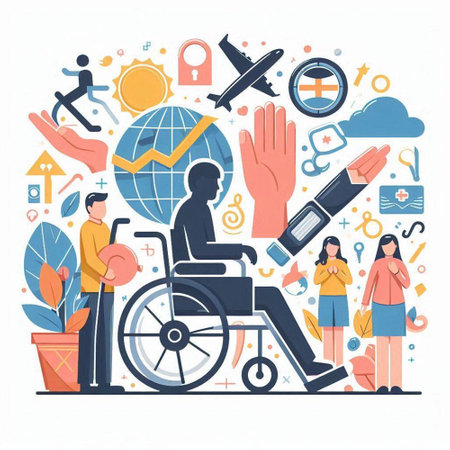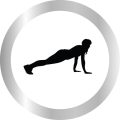Understanding Heart Attack Recovery in the U.S.
Recovering from a heart attack can feel overwhelming, especially in the United States where healthcare options and resources are vast but sometimes confusing. Many Americans each year experience a heart attack, medically known as a myocardial infarction, and their journey to recovery is shaped by several important factors unique to the U.S. healthcare system.
Overview of Post-Heart Attack Recovery
After surviving a heart attack, the main goal is to restore health, prevent future incidents, and help patients return to their normal lives. Recovery is not just about physical healing; it also involves emotional support, lifestyle changes, and ongoing medical care. In the U.S., this process often starts in the hospital and continues through outpatient programs and community resources.
Common Challenges Faced by Survivors
Heart attack survivors in America face several challenges during recovery:
| Challenge | Description |
|---|---|
| Physical Limitations | Fatigue, shortness of breath, and weakness are common after a heart attack. |
| Emotional Stress | Anxiety, depression, or fear of another heart attack may affect daily life. |
| Lifestyle Adjustments | Changes in diet, exercise habits, and medication routines are often needed. |
| Healthcare Navigation | Managing appointments, insurance, and follow-up care can be complicated. |
| Financial Concerns | The cost of treatment, medication, and rehabilitation may create stress for some families. |
The American Approach to Recovery
In the U.S., post-heart attack care usually involves a team-based approach. Cardiologists, primary care doctors, nurses, physical therapists, dietitians, and mental health professionals work together to create personalized recovery plans. Cardiac rehabilitation programs are widely recommended and are often covered by insurance. These programs provide supervised exercise sessions, education on heart-healthy living, counseling for stress management, and support for quitting smoking or managing diabetes if needed.
Key Elements of U.S. Post-Heart Attack Recovery Programs
| Element | Details |
|---|---|
| Exercise Therapy | Guided activities to rebuild strength safely under professional supervision. |
| Nutritional Counseling | Advice on adopting a heart-healthy diet based on American dietary guidelines. |
| Mental Health Support | Counseling services to address anxiety or depression during recovery. |
| Education Sessions | Workshops on understanding medications, symptom monitoring, and emergency response. |
| Family Involvement | Encouraging family members to participate in learning and supporting healthy changes at home. |
This collaborative approach ensures that survivors have access to comprehensive support at every stage of their recovery journey within the unique context of the American healthcare system.
2. The Science Behind Exercise Therapy for Cardiac Patients
Understanding Why Exercise Matters After a Heart Attack
For many Americans, recovering from a heart attack can feel overwhelming. One of the most important steps in the recovery process is starting an exercise therapy program. But why is exercise so critical? The answer lies in years of scientific research showing that regular physical activity is one of the best ways to help your heart heal and stay healthy.
Evidence-Based Benefits of Exercise Therapy
Doctors and researchers across the U.S. agree: exercise therapy offers real, proven benefits for people who have survived a heart attack. Below is a quick look at what science tells us:
| Benefit | How Exercise Helps |
|---|---|
| Cardiovascular Health | Strengthens your heart muscle, lowers blood pressure, improves cholesterol, and helps prevent future heart problems. |
| Mental Wellbeing | Lowers stress, reduces anxiety and depression, and boosts self-confidence—especially important after a major health event like a heart attack. |
| Quality of Life | Increases energy levels, helps you return to daily activities faster, and enhances your overall sense of well-being. |
What Do American Guidelines Recommend?
The American Heart Association recommends that cardiac patients join a structured cardiac rehab program whenever possible. These programs are designed to be safe and effective for people just like you. They usually include supervised exercise sessions, education about heart-healthy living, and support from a team of healthcare professionals.
Common Types of Exercise in Cardiac Rehab
- Aerobic exercises: Walking on a treadmill or using a stationary bike to get your heart pumping safely.
- Strength training: Light weights or resistance bands to build muscle without putting too much strain on your heart.
- Flexibility exercises: Gentle stretching to improve mobility and reduce stiffness.
The Bottom Line: Small Steps Make a Big Difference
You don’t have to become an athlete overnight. Even small amounts of regular movement—like taking short walks or doing simple stretches at home—can lead to big improvements over time. Most importantly, always talk with your doctor before starting any new exercise plan, so you can find activities that are safe and right for you.

3. How American Healthcare Integrates Exercise into Cardiac Rehabilitation
The Standard Pathway for Cardiac Rehab in the U.S.
In the United States, exercise therapy is considered a vital part of cardiac rehabilitation (cardiac rehab) after a heart attack. Hospitals, rehab centers, and outpatient programs all play a role in helping patients safely get back on their feet. Typically, after a patient is stable following a heart attack, doctors refer them to a structured cardiac rehab program. These programs are available in most hospitals and specialized centers across the country.
Key Components of Cardiac Rehab Programs
| Setting | Main Features | Common Activities |
|---|---|---|
| Hospital-Based Rehab | Supervised by medical staff; begins soon after stabilization | Gentle walking, range-of-motion exercises, breathing training |
| Outpatient Rehab Centers | Patients visit several times per week; group or individual sessions | Treadmill walking, stationary cycling, light resistance training, stretching |
| Home-Based Programs | For those unable to attend centers; remote monitoring often included | Personalized exercise routines, step tracking, video consultations with therapists |
The Role of Insurance and Accessibility
Most insurance plans in the U.S., including Medicare, cover cardiac rehab if prescribed by a doctor. This helps more people access these critical services. Some community health centers and YMCAs also offer affordable or free programs for those without coverage.
The Team Behind Your Recovery
A typical cardiac rehab team includes physical therapists, exercise physiologists, nurses, and doctors. They work together to create an individualized plan based on your health status and recovery goals. The team closely monitors your progress and adjusts your exercise program as needed to keep you safe while building strength and confidence.
4. Overcoming Barriers: Access, Motivation, and Cultural Considerations
Recovering from a heart attack in the U.S. comes with unique challenges that can make exercise therapy harder to access or stick with. Let’s break down these obstacles and explore how they affect patients on their road to recovery.
Access to Exercise Therapy: Insurance & Location
One of the biggest barriers is simply getting into a cardiac rehab or exercise therapy program. Insurance coverage isn’t always guaranteed, and even if it is, there may be limits on how many sessions are covered. Some people live far from the nearest rehab center, especially in rural areas, making regular visits difficult.
| Barrier | How It Affects Patients |
|---|---|
| Insurance Coverage | Not all plans cover enough sessions; out-of-pocket costs can be high. |
| Geographic Disparities | Patients in rural areas may have no local facilities; travel can be time-consuming or impossible. |
| Transportation | Lack of reliable transportation can keep patients from attending sessions regularly. |
Staying Motivated After a Heart Attack
It’s common to feel anxious, tired, or unmotivated after a heart attack. Many patients worry about pushing themselves too hard or triggering another event. Others find it tough to start new routines, especially if they didn’t exercise before.
Common Motivation Challenges
- Anxiety: Fear of having another heart issue during exercise.
- Lack of Routine: Not used to scheduled workouts or group programs.
- Mental Health: Depression or stress can lower motivation and energy.
- Lifestyle Demands: Busy work and family schedules make it hard to prioritize rehab.
Cultural Attitudes Toward Exercise Therapy in the U.S.
Cultural beliefs and social norms also shape how patients approach recovery. In some communities, there’s a strong focus on self-reliance and “toughing it out,” which might make people less likely to seek help or join group classes. Others may see exercise as optional rather than essential medical care.
Cultural Factors That Influence Participation
- Perceptions of Aging: Some believe older adults shouldn’t push themselves physically, even though exercise is safe and beneficial when guided by professionals.
- Diversity & Language: Non-English speakers or recent immigrants might not get information in their preferred language or understand available resources.
- Mistrust in Healthcare: Past negative experiences can lead to skepticism about medical advice, including recommendations for exercise therapy.
- Community Support: Areas with strong social networks may encourage more participation through peer support groups and community-based programs.
Tackling the Barriers Together
The U.S. healthcare system is working toward solutions like telehealth cardiac rehab (virtual sessions), insurance policy changes, and culturally sensitive programs that meet patients where they are—both geographically and emotionally. Understanding these barriers helps everyone involved in post-heart attack recovery create better support systems for long-term health.
5. Empowering Recovery: Resources and Support for Patients and Families
Finding the Right Support After a Heart Attack
Recovering from a heart attack goes far beyond hospital walls. In the United States, many resources are available to help patients and their families build healthy routines and manage daily challenges during recovery. Knowing where to turn can make this journey less overwhelming and more successful.
Community Resources to Aid Recovery
Local organizations, wellness centers, and support groups offer programs designed specifically for heart attack survivors. These services are often free or low-cost and aim to connect people with peers who understand what they are going through.
| Resource Type | Description | How to Access |
|---|---|---|
| Cardiac Rehabilitation Programs | Supervised exercise, education, and counseling tailored for heart attack survivors. | Ask your doctor for a referral; most hospitals offer these programs. |
| American Heart Association (AHA) | Information on heart health, local events, online support communities. | Visit AHA Website |
| YMCA Healthy Heart Programs | Community-based exercise classes for those recovering from cardiac events. | Check your local YMCA or their website for details. |
| Peer Support Groups | Meetings with other survivors and families, both in-person and online. | Ask your hospital social worker or search online directories. |
| Nutritional Counseling | Dietitians help create heart-healthy meal plans personalized to your needs. | Request a referral from your primary care provider or hospital discharge planner. |
Professional Networks: Who Can Help?
A team approach is key in post-heart attack care. In addition to your cardiologist, you may work with physical therapists, nurses, mental health counselors, and nutritionists. Many clinics have case managers or patient navigators who can answer questions about insurance coverage, medication management, and follow-up appointments.
Your Healthcare Team Might Include:
- Primary Care Provider (PCP): Coordinates ongoing care and preventive check-ups.
- Cardiologist: Specializes in heart health and monitors recovery progress.
- Physical Therapist: Designs safe exercise plans for gradual strength building.
- Mental Health Counselor: Supports emotional well-being after a traumatic event like a heart attack.
- Nurse Educator: Teaches medication management and symptom monitoring at home.
Health Education Initiatives for Survivors & Families
The U.S. offers many educational initiatives that empower patients with knowledge on how to stay healthy after a heart attack. Workshops, webinars, printed guides, and smartphone apps help teach important skills—from recognizing warning signs of another attack to making smart food choices at the grocery store. Hospitals and community centers frequently host these sessions; check bulletin boards or websites for upcoming classes near you.
Popular Education Topics Include:
- Lifestyle changes after a heart attack (exercise, nutrition, stress management)
- Understanding medications—how and when to take them safely
- Coping with anxiety or depression after a cardiac event
- Tobacco cessation programs and resources
- Recognizing symptoms that require immediate medical attention
If you or your loved one is navigating recovery after a heart attack, remember: asking for help is a sign of strength. The right support makes all the difference on the road to better health.


